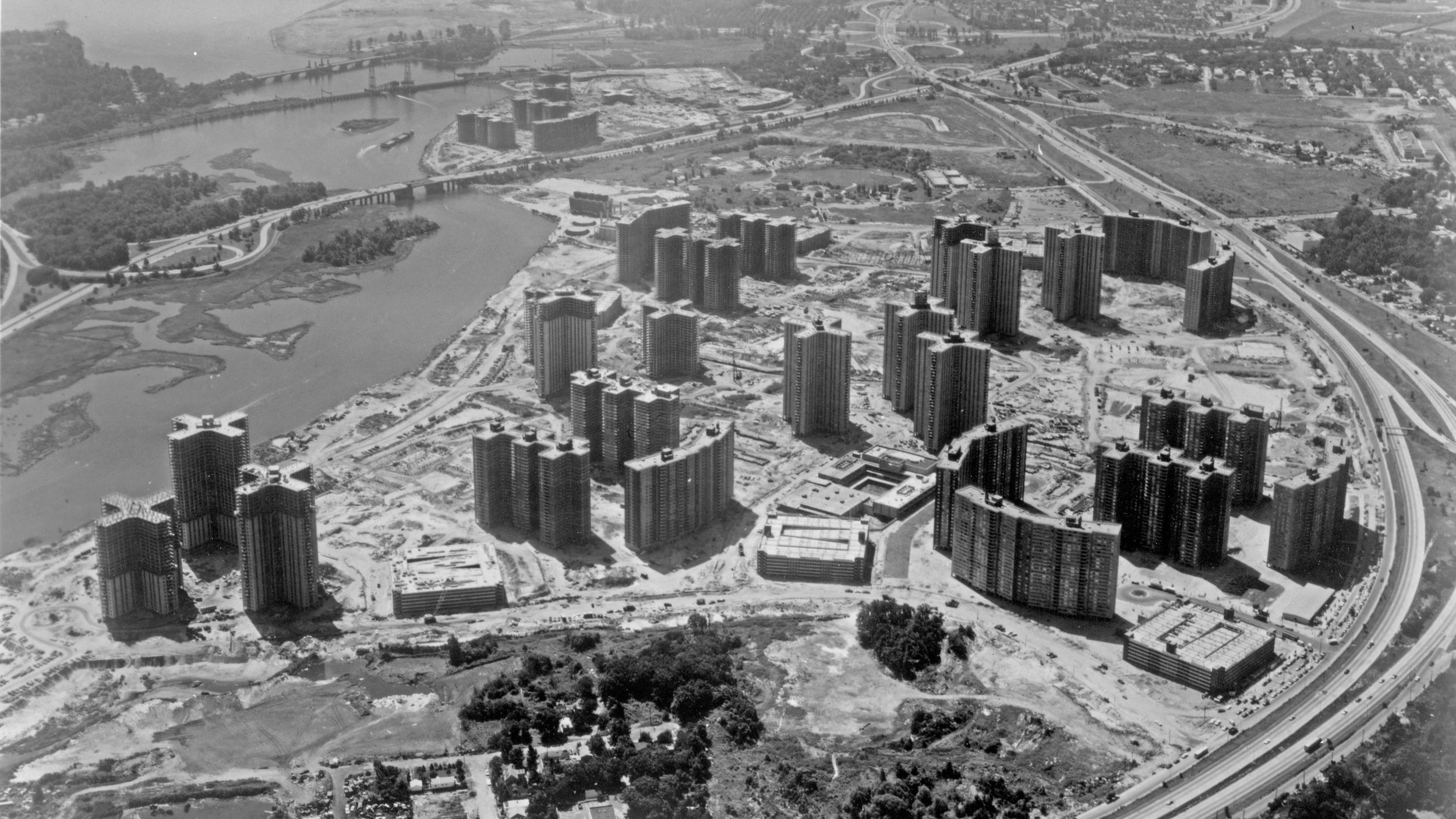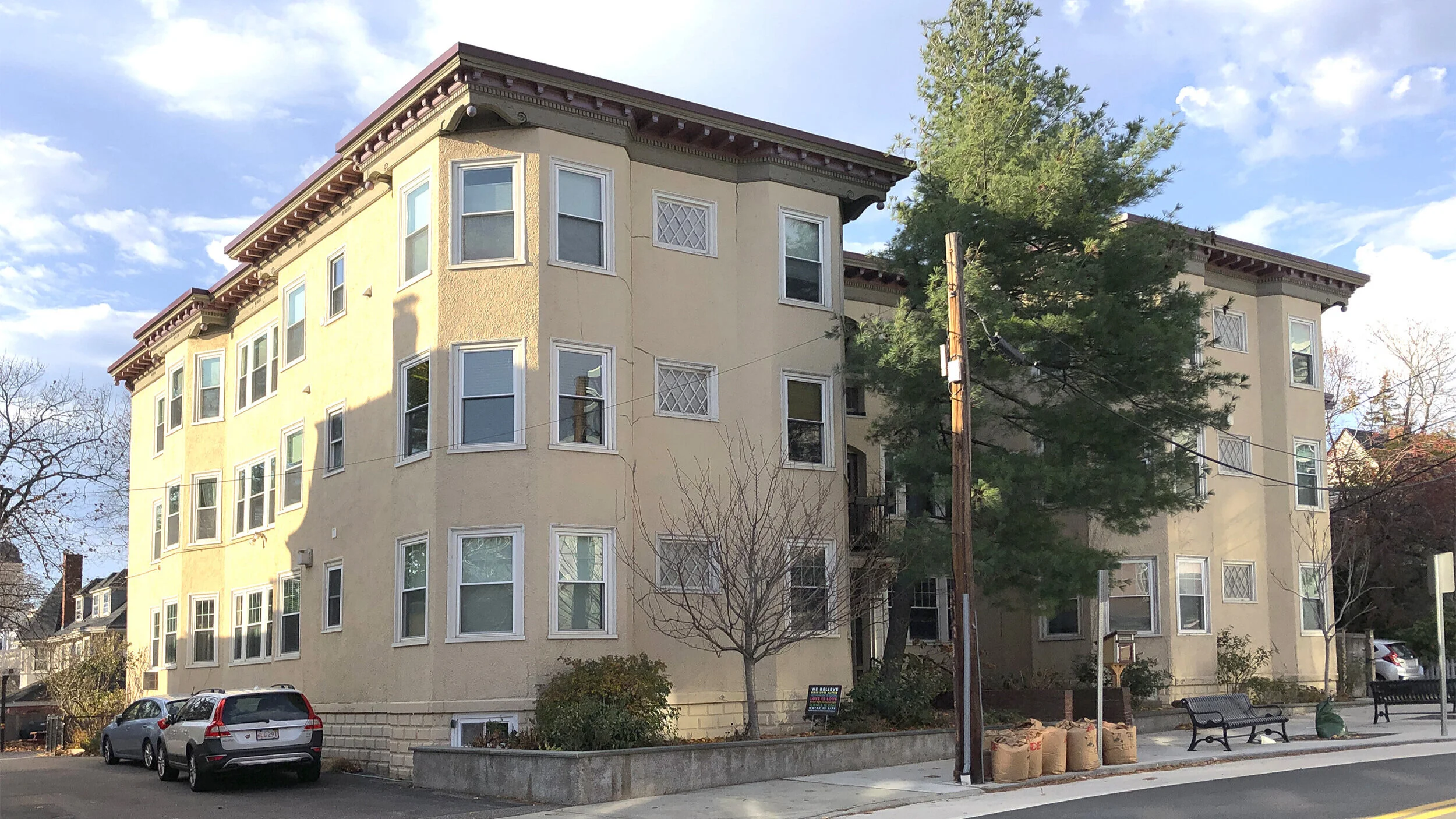Rethinking Co-op City, White Flight, and Race
There are few trends in urban America that were more detrimental, especially in the Northeast and Midwest, than post-World War II white flight. White flight destabilized neighborhoods, and entire cities. It was both cause and symptom of the broader urban crisis of the second half of the twentieth century. And few places have come to stand as a symbol of white flight, at least for New Yorkers, more than Co-op City, the huge project, with over fifteen thousand apartments, mostly in high-rise towers, built for people “of moderate means” in the Northeast Bronx by the labor-backed United Housing Foundation (UHF) with funds from New York State’s Michell-Lama program.
Almost since its inception, in the mid-1960s, especially as the Bronx became America’s poorest urban county in the 1970s and 1980s, Co-op City has stood as a paradigmatic example linking white flight to urban disinvestment and decay. This article challenges that view. I argue instead that Co-op City be recognized as a model for relative interracial cooperation and comity.
Like previous UHF developments in New York City, a majority of Co-op City’s initial applicants were working– and middle-class Jews. The Jews that made up seventy percent of Co-op City’s initial population largely came from the West Bronx neighborhoods around the Grand Concourse. With their departure, the population of the Grand Concourse became poorer, and predominantly Black and Puerto Rican. As Evelyn Gonzalez writes in her history of the borough, Co-op City “allowed fearful white Jewish residents to abandon Grand Concourse neighborhoods almost overnight” which, according to a former resident she quotes, “helped undermine the rich and integral fabric of Bronx neighborhoods.”
This narrative is overly simplistic, as I argue in my recent book. Much like former resident Sonia Sotomayor, I see in the complex’s early years a story of a functioning, multicultural, middle-class community. In this article, however, I turn to a much less discussed aspect of Co-op City: how it became majority non-white in the 1980s—without social turmoil or a change in its economic status. Its stability, while other neighborhoods in the Bronx, and across urban America, experienced socioeconomic decline and strife, marks a path rarely taken and even more rarely analyzed in the history of U.S. cities.
When Co-op City was first fully occupied in the early 1970s, it was approximately three-quarters white, and more Jewish than almost any other neighborhood in New York City (Figure 1). Still, it wasn’t exactly a racial fortress: its share of people of color roughly reflected that of both New York City and the Bronx. And like the city and borough, it became majority non-white in the ensuing decades.
Figure 1. Co-op City under construction, Aug. 12, 1969. Courtesy of the International Ladies Garment Workers Union Archives, Kheel Center, Cornell University.
Initially, this shift was a source of significant consternation on the part of many Co-op City residents, of all racial backgrounds, who worried that racial turnover was a harbinger of decline and tried to slow it. To do so, they turned to the most potent tool at their disposal: the list that prospective residents joined while waiting for an apartment vacancy.
To move into Co-op City, prospective residents apply to the cooperative corporation that governs it, called Riverbay, and, if their eligibility meets Mitchell Lama criteria, wait until a suitable apartment becomes available. Typically, as in all publicly financed housing co-ops, the waitlist operates on a first-come, first-served basis. In the late 1970s and 1980s, however, Co-op City’s board of directors twice sought to manipulate the waitlist to “preserve racial balance” by favoring white applicants.
The first time followed Co-op City’s infamous rent strike in 1976, which centered on conflict over rising maintenance costs. At the time, the waitlist was ninety percent Black and Latino while the community was approximately sixty-five percent white. In response, the board passed Resolution 131 prioritizing relatives of current residents in the allotment of vacant apartments. The Urban League filed a formal complaint of discrimination with the New York State Division of Housing, which oversees state-funded Mitchell-Lama projects such as Co-op City. The measure was quickly shelved.
A decade later Co-op City was no longer a majority white community and the waitlist had become almost entirely Black and Latino. In 1987, the board, including three of its four Black members, authorized a $250,000 advertising campaign to reach “a more balanced pool of potential buyers”—meaning white people. Coverage in the New York Times ignited a controversy in which even board members who had voted for the campaign came to decry it as “extremely insensitive (at best) to the black, latino . . . members of our community.”
Both attempts to manipulate the waitlist were motivated by a fear that Co-op City could not maintain its middle-class character if it was no longer majority white. As one Black high school student told a New York Times reporter, “I’m black. I’m realistic. It’s going to turn into the projects if all the whites leave.”
That fear was unfounded. Co-op City remained middle class even as it became a majority Black community. Indeed, median income in Co-op City has been nearly identical to that of the United States since the 1960s. How did Co-op City manage to avoid becoming the “projects,” as this high schooler and so many other Co-op City residents of all racial backgrounds feared?
One reason was that Co-op City was designed to attract people of “moderate means,” and that appeal endured. The apartments are spacious and feature amenities like central air conditioning and private balconies that are rarely available in similarly priced homes in New York City. They were also affordable. After buying in by purchasing shares in the cooperative corporation, residents pay only modest monthly carrying charges to cover servicing construction loans, ongoing maintenance and operating expenses, and utilities.
“As racial violence became endemic in U.S. cities in the 1980s and 1990s, Co-op City neighbors reassured each other that racial transition was no big deal.”
Co-op City’s carrying charges rose precipitously from the early 1970s through the mid-1980s, due to a combination of factors including inflation, cost overruns during the initial construction process, and the cost to repair construction defects later on—prompting the rent strike in 1975-76. In the late 1980s, carrying charges finally stabilized, growing at less than the rate of inflation, and much less than the cost of other housing in New York City. Costs rose so slowly because of the vigilance of residents as well as the belated willingness of New York State, thanks to residents’ activism, to assist them in this goal.
Indeed, in a turn of events that is quite different from how circumstances played out in other urban neighborhoods, in New York and nationally, the very moment at which Co-op City became majority non-white was the point at which state officials began to appreciate it, and to work to protect its unique qualities, including affordability. This led to more public investment to repair Co-op City’s infrastructure, and, by the 1990s, an arrangement to reduce the equity payments of new residents, enhancing the sense of financial, and social stability. Today, as a result, the largest apartments, with three bedrooms, cost just $48,750 in equity for shares (which can be financed) and $1,618 in carrying charges per month. Such prices, and their stability over time, have long made Co-op City, according to many residents I’ve spoken to, the best housing deal in New York City.
But economic factors were not the only ones that kept Co-op City stable. Also crucial was the positive rhetoric around multiculturalism in the community, derived in large part from the positive experience of actually living in an integrated community (Figure 2). In the late 1980s, anxieties about Co-op City’s Black majority played out, like elsewhere in urban America, as fear of rising crime. These anxieties were expressed by community members of all racial backgrounds. As one Black Riverbay director wrote in the 1980s, “Most of us are here because the old neighborhoods started to go down: drugs and robberies. Co-op City was a safe place for you and your family. Get involved. Join an organization. Keep Co-op City safe.”
Figure 2. Young and old gather outside Building 4 at Co-op City in the 1980s, n.d. Photograph by Gregory Myers.
At the same time, residents recognized the importance of racial integration. Another Black Riverbay director stated: “I personally take pride in the fact that I can live in a community that is racially integrated and that I enjoy relationships with many who are of different religious faiths and whose color is different from mine.” Or as a white resident said in 1988, “We all have the same type of jobs. We all want the same things. Almost every family has [racially] mixed friends.”
Claims of multiculturalism and colorblindness often degenerate into harmful bromides that allow white people to avoid responsibility for, or awareness of, their racial privilege. In Co-op City, this was sometimes the case. For the most part, however, commitments to racial integration served a positive function, enabling residents to feel a sense of continuity and community. And as racial violence became endemic in U.S. cities in the 1980s and 1990s, Co-op City neighbors reassured each other that racial transition was no big deal.
In the words of an integrated group of community leaders following the 1989 murder of a Black teenager by Italian teens in Bensonhurst, Brooklyn, which led to protests across the city, “Co-op City has always been and will continue to be an integrated community believing in the American ideal of an equal and open society where all persons, regardless of race, religion or national origin can work, live and play wherever their abilities and dreams take them.” Whether or not this statement reflected reality in a city and a country riven with racial prejudice and violence, the faith that the residents had in their ability to create and sustain a multicultural American ideal was crucial to maintaining harmony. More than thirty year later, it still is.
Citation
Annemarie Sammartino, “Rethinking Co-op City, White Flight, and Race,” PLATFORM, Dec 19, 2022.





